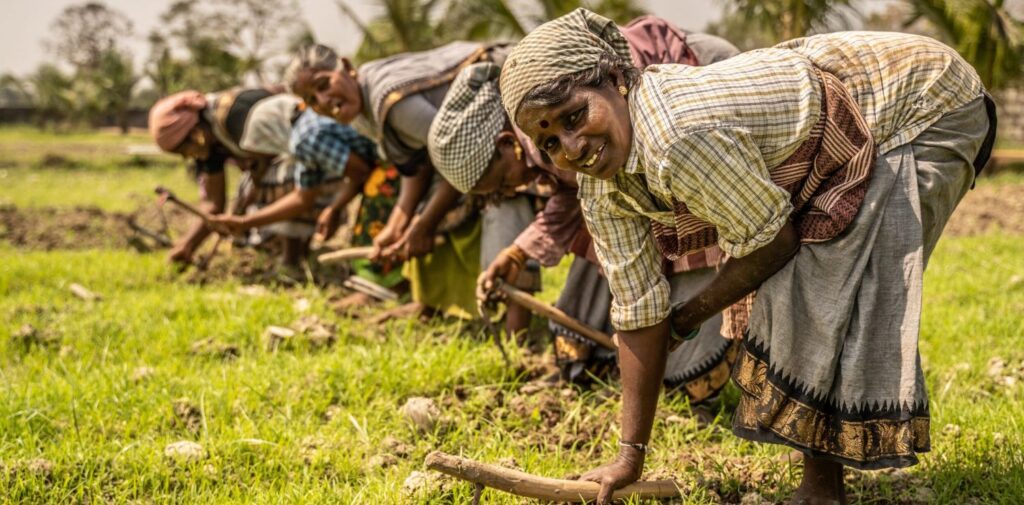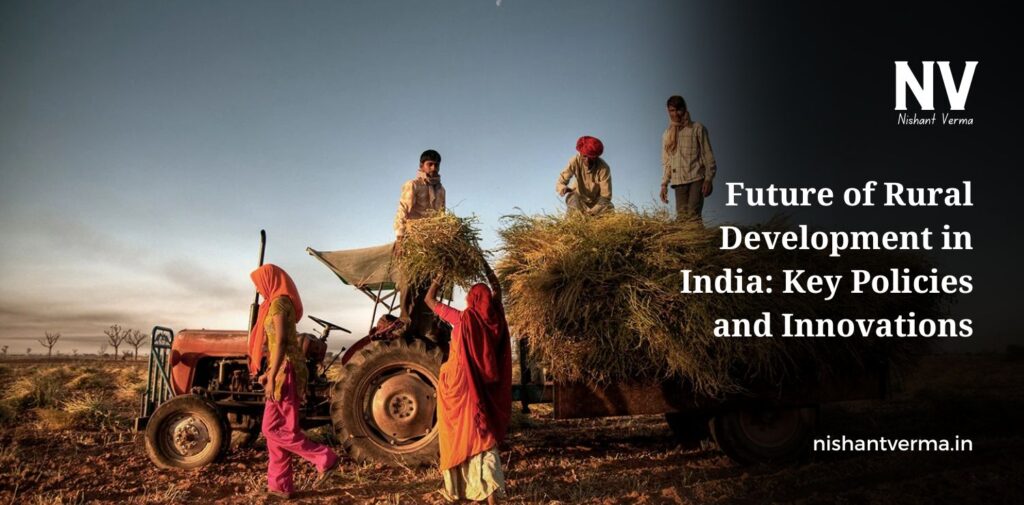India is a country where most people live in villages, and these villages are home to a large part of India’s population. However, rural areas often face many challenges, such as poverty, lack of education, poor healthcare, and limited job opportunities. The government and various organizations have always worked towards improving life in these rural areas, and many important policies and new ideas are helping to create a better future for these communities. In this article, we will talk about how the future of rural development in India looks bright, thanks to various key policies and innovations.

What is Rural Development?
Before we dive into the policies and innovations, let’s first understand what rural development means. Rural development refers to efforts that aim to improve the quality of life in rural areas. This includes making sure that people in villages have access to good education, healthcare, jobs, electricity, and clean water. It also focuses on improving infrastructure like roads and transportation, which can help rural areas grow and thrive.
Key Policies Driving Rural Development
The Indian government has introduced several policies over the years to promote rural development. These policies aim to improve living conditions, create job opportunities, and ensure sustainable growth in rural areas. Let’s take a look at some of the important policies:
Mahatma Gandhi National Rural Employment Guarantee Act (MGNREGA)
One of the most well-known policies for rural development is the MGNREGA, which was introduced in 2005. This policy guarantees at least 100 days of wage employment every year to every rural household that demands work. The goal is to provide employment to poor people in villages, reduce poverty, and create useful infrastructure like roads, wells, and ponds. By doing this, people in rural areas can earn money while also improving their communities.
Pradhan Mantri Awas Yojana (PMAY)
Another important policy is the Pradhan Mantri Awas Yojana, which aims to provide affordable housing for the poor in rural areas. The government has set a target of building millions of houses for rural families, especially those living in huts or without proper shelter. This will help reduce homelessness and give people in rural areas a better place to live.
National Rural Health Mission (NRHM)
Health is an important part of rural development, and the National Rural Health Mission aims to provide better healthcare services in rural India. Through this mission, the government is working to improve hospitals, provide medical staff, and ensure that villagers have access to medicines and vaccinations. This has helped reduce the number of diseases and has improved the overall health of people living in rural areas.
Rural Electrification
Electricity is essential for development, but many villages in India still do not have access to it. To solve this problem, the government launched the Deendayal Upadhyaya Gram Jyoti Yojana to bring electricity to rural areas. With this scheme, more and more villages are now getting power, which helps with daily life and makes it easier for people to start businesses, study, and improve their lives.
Digital India Programme
The Digital India program aims to connect rural areas to the internet and provide digital services. With the help of this initiative, people in villages can access online government services, apply for jobs, and even learn new skills through online platforms. This program has brought a new wave of growth in rural areas by helping people in villages connect with the outside world.

Innovations Helping Rural Development
Along with these important policies, there have also been many exciting innovations that are changing the way rural development works in India. These innovations use new technologies and ideas to solve problems in villages and improve life for rural people.
- Smart Villages and Solar Power: One of the most exciting innovations is the creation of smart villages, where technology and modern solutions are used to improve every aspect of life. For example, some villages are now using solar power to provide electricity, which is a clean and affordable source of energy. Solar panels are being installed on rooftops and in open fields, and this helps reduce the dependence on traditional sources of energy like coal and wood. These smart villages also use technology to improve farming, healthcare, and education. Farmers are using mobile phones to get weather updates, learn better farming techniques, and sell their products directly to buyers. This helps increase farm productivity and income.
- Mobile Health Clinics: In rural areas, many people live far away from hospitals and doctors. To solve this problem, mobile health clinics have been introduced. These are specially equipped vans that travel to remote villages and provide medical care to people who cannot easily visit a hospital. These mobile clinics offer services like vaccinations, check-ups, and treatments for common illnesses. This is a great way to ensure that rural people have access to basic healthcare without having to travel long distances.
- Agri-Tech Innovations: Farming is the main occupation in most rural areas of India, but many farmers face problems like low crop yields, poor irrigation, and lack of knowledge about new farming techniques. Agri-tech innovations are helping to solve these problems. Technologies like drip irrigation and soil sensors are being used to save water and improve crop production. Mobile apps and online platforms are also providing farmers with information about weather, prices, and market trends. This helps farmers make better decisions and improve their income.
- Skill Development Programs: Many rural people do not have the skills required to get a good job. To address this, the government and various organizations are running skill development programs to teach people new trades and skills. These programs focus on training people in areas like sewing, carpentry, plumbing, and computer skills. This helps people find jobs in cities or start their own businesses in rural areas, leading to more income and a better quality of life.
- Women Empowerment Programs: Empowering women is an important part of rural development. In many rural areas, women are the backbone of the family, but they often lack access to education, healthcare, and financial independence. Programs like Self-Help Groups (SHGs) are helping women come together and support each other. These groups encourage women to save money, start small businesses, and become financially independent. As a result, women in rural areas are becoming more confident and contributing to the development of their communities.
- Water Conservation and Management: Water scarcity is a big issue in many rural parts of India. To help solve this, there are innovations in water management, like the rainwater harvesting technique, which collects and stores rainwater for later use. This helps in areas that face dry spells or have no access to rivers. Additionally, check dams and small ponds are being built to store water and support farming and drinking needs. These innovations ensure that rural communities have enough water throughout the year.

Challenges and the Way Forward
Despite these exciting policies and innovations, rural development in India still faces challenges. Some villages are still struggling with poverty, illiteracy, and poor infrastructure. There is also the challenge of ensuring that new technologies reach the most remote areas. However, with continued efforts from the government, NGOs, and the people of India, the future of rural development looks promising.
The key to success will be collaboration between the government, private companies, and communities to bring about change. Education, healthcare, infrastructure, and sustainable development will be at the core of this transformation. As more and more people embrace new ideas and technologies, rural India will continue to grow and thrive, making it a better place for everyone.
Conclusion
The future of rural development in India is bright, thanks to the introduction of key policies and exciting innovations. From providing jobs and housing to improving healthcare and education, these efforts are helping to create a better life for people living in rural areas. As more new ideas and technologies are introduced, rural India will continue to grow and prosper, making it an important part of India’s overall progress. With the right support and efforts, rural India will shine in the years to come!




